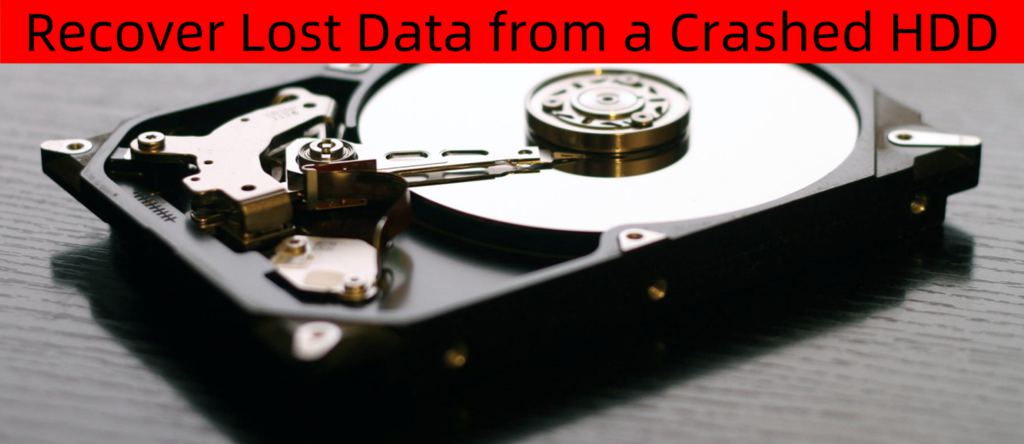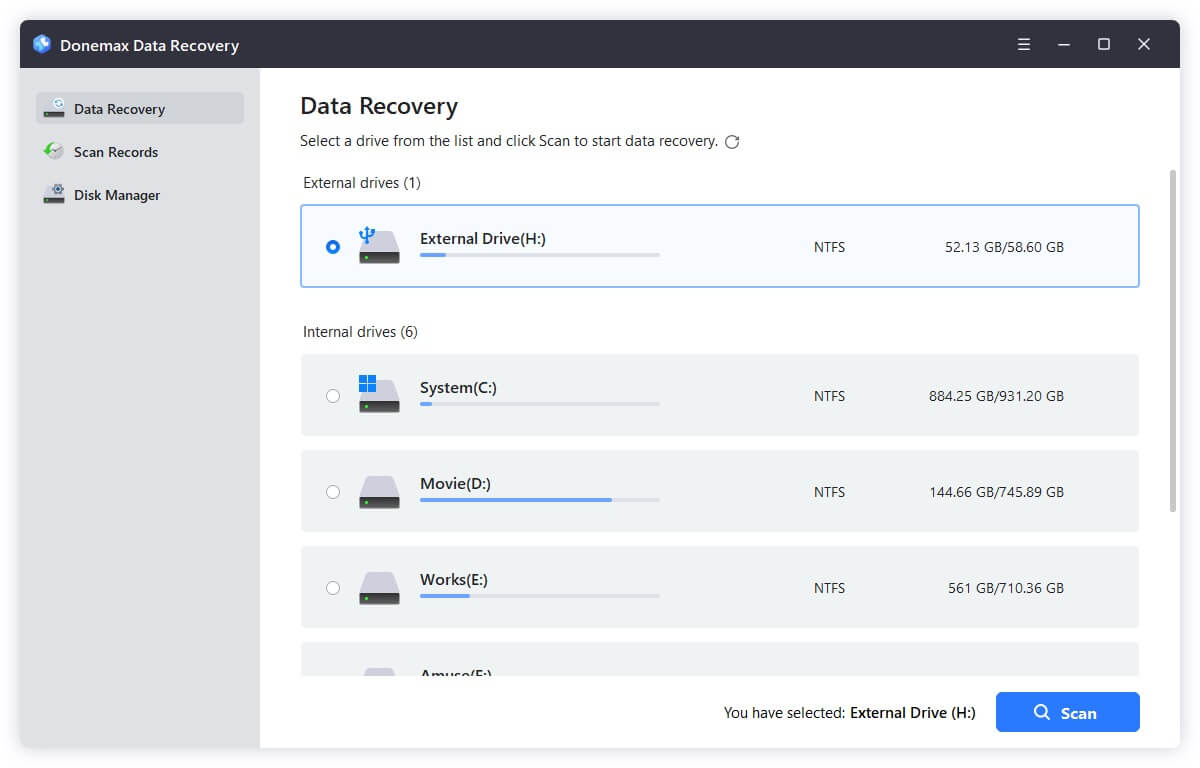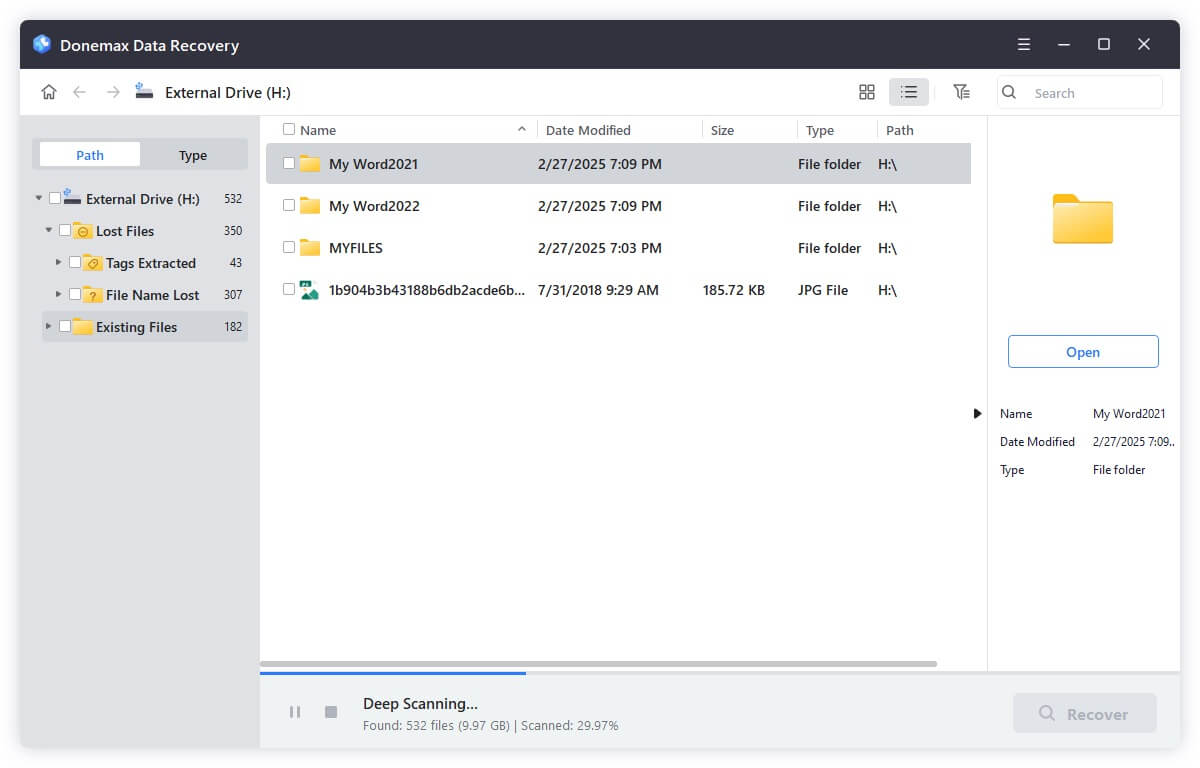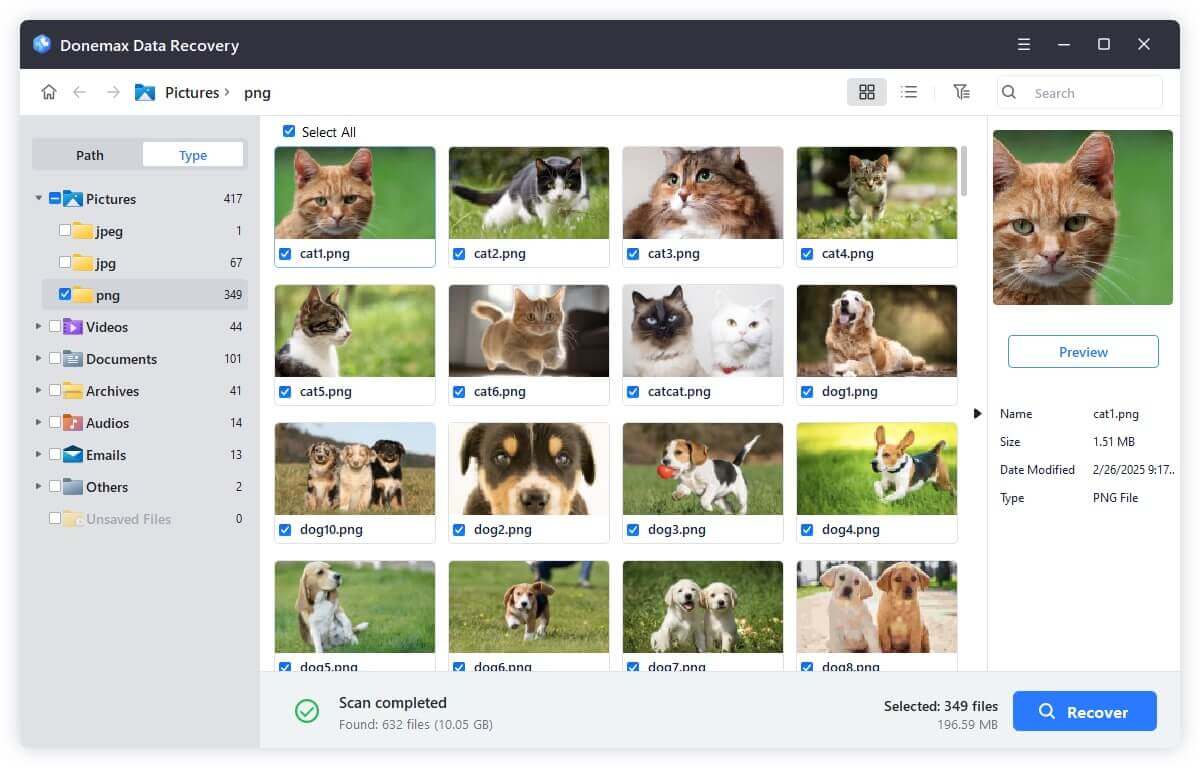Before we start: Donemax Data Recovery is a perfect HDD data recovery program. It not only can recover permanently deleted files from a crashed HDD, but it also supports to recover lost files from a formatted HDD, corrupted HDD, etc.
PAGE CONTENT:
Hard Disk Drives (HDDs) have long been a staple of digital storage, found in everything from personal computers to enterprise servers. But despite their reliability, HDDs are not invincible. They can crash suddenly - leaving valuable data at risk. Whether it's personal memories, business documents, or critical software, the loss of data can be devastating.
Thankfully, not all hope is lost. In many cases, data from a crashed HDD can be recovered with the right tools, techniques, and timing. In this guide, we'll walk you through how to recover lost data from a crashed HDD - step by step.

Your Hard Disk Drive Gets Crashed? Learn Everything
Signs Your HDD Has Crashed
Before jumping into recovery methods, it's important to confirm that your HDD has indeed crashed. Some symptoms include:
- Clicking or Grinding Noises: Mechanical noises can signal a head crash or motor failure.
- System Boot Failures: If your operating system won't start, it might be due to a corrupted HDD.
- Frequent Freezing or Blue Screens: This can happen when the system attempts to access damaged sectors.
- Drive Not Detected: Your system may fail to recognize the HDD at all.
- Error Messages: Warnings like "Disk needs to be formatted" or "Drive not accessible" can point to logical corruption.
Recognizing these early can help prevent further damage.
Determine the Type of HDD Crash
Understanding the type of crash you're dealing with is crucial in choosing the correct recovery strategy. HDD failures generally fall into three categories:
1. Logical Crash
These are software-level issues like:
- Accidental deletion or formatting
- Corrupted file systems
- Partition errors These types are often recoverable using software.
2. Mechanical or Physical Crash
This involves:
- Damaged platters
- Failed read/write heads
- Motor failures Mechanical issues typically require professional help and cleanroom facilities for repair.
3. Firmware or PCB Failures
A corrupted firmware or faulty printed circuit board (PCB) can make the HDD inaccessible, even if the physical components are intact. This can sometimes be fixed with a firmware update or PCB replacement.
Precautions Before Attempting Recovery
Trying to recover data from a crashed HDD can be risky if done improperly. Before proceeding:
- Stop Using the Drive: Continued use may overwrite recoverable data.
- Disconnect It Immediately: This minimizes further mechanical wear.
- Avoid Writing to the Drive: Every write reduces the chance of successful recovery.
- Never Open the Drive Yourself: Exposing platters to air can cause irreversible damage.
- Use a Write Blocker (If Available): This prevents any accidental writes during recovery.
Methods to Recover Data from a Crashed HDD
When dealing with a crashed HDD, choosing the correct recovery method depends on the severity and nature of the crash. Below are detailed approaches for both logical and physical crashes, with step-by-step instructions and practical advice.
1. Use a Different Computer or Adapter
Before jumping to conclusions, it's worth testing whether the drive crash is actually a system-related issue or a connectivity problem.
Steps:
- Remove the HDD from the original system, especially if the computer fails to boot.
- Connect it externally using a SATA-to-USB adapter or a 2.5"/3.5" external hard drive enclosure.
- Plug it into a working computer and check if it's recognized:
- On Windows: Look in Disk Management (diskmgmt.msc).
- On macOS: Use Disk Utility or run diskutil list in Terminal.
If Detected:
You might be able to copy files directly. If folders or files are corrupted or inaccessible, proceed to use data recovery software.
If Not Detected:
- Try a different cable or port.
- Try accessing the BIOS/UEFI to see if the system detects the hardware.
- If still undetected, the issue may be firmware or hardware related - skip to physical recovery options.
Tip: If the drive shows up in Disk Management without a file system or shows "RAW", it likely has a logical issue, which is still recoverable using software.
2. Recover Data from a Logical Crash (DIY Recovery)
Logical crashes are typically the result of file system corruption, bad sectors, accidental deletion, or formatting. These can be addressed effectively without disassembling the drive.
Use Built-in System Tools
Windows Tools:
- CHKDSK Command:
- Open Command Prompt as Administrator
- Type: chkdsk X: /f /r (replace X with your drive letter)
- This scans for and attempts to fix file system errors and bad sectors.
- SFC /scannow:
- For OS-level corruption, this command checks and restores critical system files.
- Windows Recovery Environment:
- Boot into recovery mode and run Startup Repair or System Restore (if enabled).
macOS Tools:
- Disk Utility (First Aid):
- Go to Applications > Utilities > Disk Utility.
- Select the drive and click First Aid to run a repair check.
- Terminal Commands:
- diskutil list to identify your disk.
- diskutil repairVolume /dev/diskX (replace X with your disk number).
Important: These tools attempt to repair your drive, which may inadvertently overwrite recoverable data. If your data is more important than repairing the disk, proceed directly to recovery software.
Use Data Recovery Software
Recovery software can access and retrieve files even from drives that no longer appear in File Explorer or Finder. Here's how to use them effectively.
Features to Look For:
- Deep scan capability
- Preview before recovery
- Filter by file type
- RAW partition recovery
Donemax Data Recovery is a powerful data recovery program. It can completely recover lost data from a crashed HDD on Windows or macOS.
Step 1. Download and install Donemax Data Recovery on a different drive (not on the crashed HDD).
Step 2. Launch the program and select the crashed HDD from the device list.

Step 3. Click Scan – it will perform a quick and then deep scan.

Step 4. Once completed, use the filter tools to locate specific files (e.g., documents, videos). Preview files to ensure integrity, then click Recover and save to another healthy disk.

Pro Tip: Deep scanning can take hours depending on the size and condition of the disk. Let it run uninterrupted to maximize recovery success.
Types of Files You Can Recover:
- Photos and Videos (.jpg, .png, .mov, .mp4)
- Documents (.docx, .xlsx, .pdf)
- Emails (.pst, .mbox)
- Archives (.zip, .rar)
- Other files
Limitations of Software-Based Recovery:
- Severely corrupted sectors may return unreadable files.
- Physically damaged HDDs (grinding, clicking) are not suitable for this method.
- Recovery is not guaranteed if sectors are overwritten.
Recover Data from a Physically Crashed HDD
If your drive is making strange noises or isn't spinning at all, you're likely dealing with a physical failure.
Why You Shouldn't Attempt DIY Fixes
Opening an HDD in a non-sterile environment allows dust and debris to settle on the platters, leading to permanent data loss. Mechanical repairs require specialized tools, microscopes, and cleanrooms.
Use a Professional Data Recovery Service
These services can disassemble the drive in a Class 100 cleanroom and use advanced techniques like platter transplantation and head stack replacement.
Top Data Recovery Labs:
- DriveSavers
- Ontrack
- Gillware
- Seagate Data Recovery Services
What to Expect:
- Diagnosis Fee: Often free or low-cost
- Success Rate: Varies based on damage, often 70–90%
- Cost: $300 to $3000+, depending on complexity
- Turnaround Time: 3 to 10 days (faster with rush service)
Professional recovery is your best (and often only) option for severe mechanical damage.
How to Prevent Future HDD Crashes?
Once you've recovered your data - or even if you haven't - it's time to think about prevention.
1. Regular Backups
The most effective defense. Use:
- External Hard Drives
- Cloud Storage (Google Drive, Dropbox, OneDrive)
- Backup Software (Time Machine for Mac, File History for Windows)
- Disk Cloning Software (Donemax Disk Clone)
2. Monitor Drive Health
Use SMART monitoring tools like:
- CrystalDiskInfo (Windows)
- DriveDx (Mac) They can alert you to failing sectors, high temperatures, and more.
3. Avoid Power Surges
Invest in a UPS (Uninterruptible Power Supply) or surge protector to prevent electrical damage.
4. Keep It Cool and Clean
Excessive heat or dust can shorten HDD lifespan. Keep your system clean and well-ventilated.
5. Replace Aging Drives
Most HDDs have a lifespan of 3–5 years. Don't wait for failure - migrate your data early.
Conclusion
Recovering data from a crashed HDD can be daunting, but it's far from impossible. If the failure is logical, you can often retrieve your files using DIY tools and software. For physical damage, a professional recovery service is your best bet.
Regardless of the method, always remember: prevention is better than cure. Regular backups, system monitoring, and hardware care go a long way in protecting your digital life.
If your HDD has crashed, don't panic - follow the steps outlined in this guide, assess the damage, and choose the recovery path that best fits your situation. Your lost data might just be a few steps away from being saved.


Donemax Data Recovery
Donemax Data Recovery offers advanced scan technology to ensure finding every recoverable file from your computer hard drive or external storage device. It supports to recover lost data or inaccessible data due to deletion, emptying recycle bin, format, OS upgrade, partition loss, hard drive crash, device damage, logical error, etc.
Related Articles
- Feb 11, 2025How to Recover Deleted or Lost FLAC Audio Files? [3 Methods]
- Jun 28, 20255 Reliable Methods to Recover Deleted PSB File?
- May 16, 2025What is a DNG File? How to Recover Lost DNG RAW Images?
- Jul 02, 2025Best 3 Methods to Recover Deleted RMVB Videos
- May 29, 2025How to Recover Lost Data from a Damaged/Corrupted Partition?
- Apr 01, 2025Data Recovery from Damaged SD Card: A Comprehensive Guide

Lucien
Lucien is a writer and a chief programmer of Donemax software who has worked in the company for 5+ years. He has written much of the content on the site and devotes to providing troubleshooting and solution for Windows and Mac users including disk cloning, data recovery, migration, eraser, error fixes.

Gerhard Chou
In order to effectively solve the problems for our customers, every article and troubleshooting solution published on our website has been strictly tested and practiced. Our editors love researching and using computers and testing software, and are willing to help computer users with their problems
